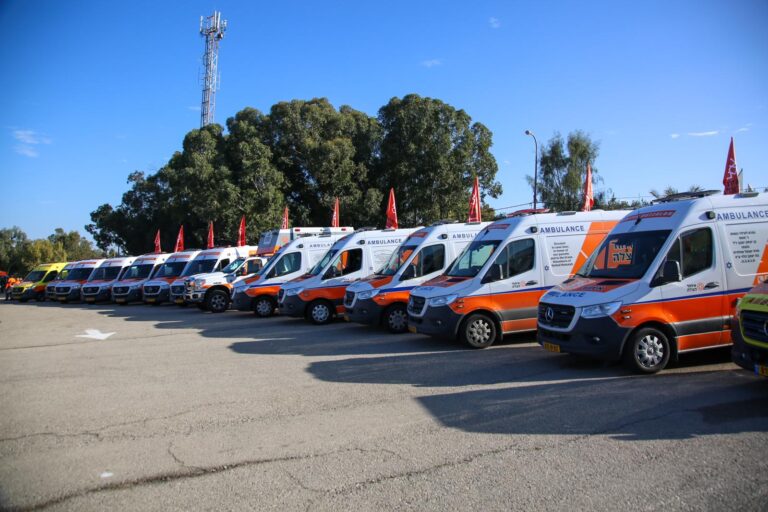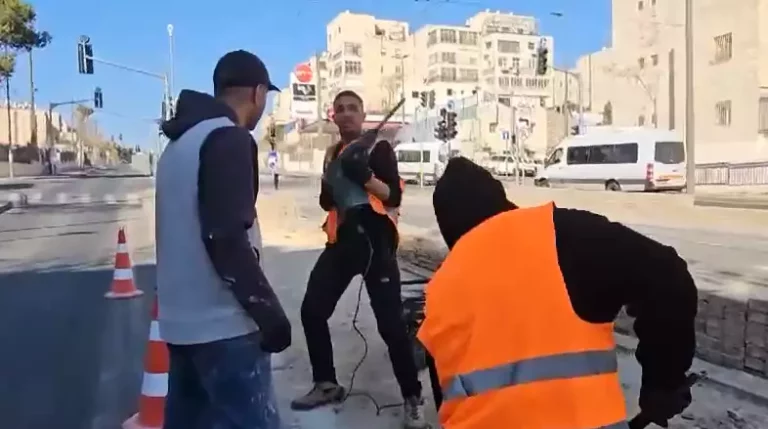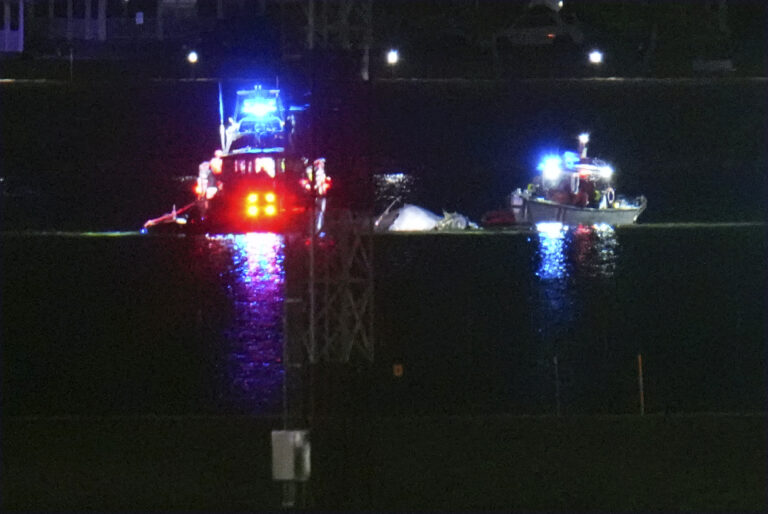 As Hurricane Irene barrels toward the East Coast, the city is urging residents to be prepared. At a press conference this morning, Mayor Michael Bloomberg said it’s still to early to predict the storm’s impact on the five boroughs, but that officials are “preparing for the worst, and hoping for the best.”
As Hurricane Irene barrels toward the East Coast, the city is urging residents to be prepared. At a press conference this morning, Mayor Michael Bloomberg said it’s still to early to predict the storm’s impact on the five boroughs, but that officials are “preparing for the worst, and hoping for the best.”
The Category 3 storm could intensify into an even stronger Category 4 today, with winds over 130 miles an hour.
The city’s Office of Emergency Management has activated the emergency operations center as a precaution, and is warning of flooding in low lying areas including the southern tip of Manhattan, Coney Island, and the Rockaways.
Mayor Michael Bloomberg is urging New York City residents living in low-lying areas to line up a place to stay on high ground ahead of possible evacuations this weekend due to Hurricane Irene.
Bloomberg said Thursday that he expected to make a decision by late Friday whether residents in the city’s so-called “Zone-A” would need to evacuate ahead of the storm that’s now expected to hit the city Sunday. That zone includes neighborhoods along the coast, including Battery Park City in Manhattan, Coney Island in Brooklyn and Far Rockaway in Queens.
Crews are working to clean out catch basins to help with street drainage. The city has also moved police boats to station houses in low-lying areas, hired emergency forest contractors and topped off emergency generators with fuel.
Mayor Bloomberg says crews spent part of the morning clearing storm drains to help alleviate flooding concerns.
Officials are also preparing for possible evacuations, but say those steps are not necessary just yet.
“Practical sense, we’re talking about a long period of time. People don’t believe it, people want to take things with them, wait until make absolutely sure the storm’s actually going to come, they can’t the keys to their car, or the papers they need. Which is what makes it difficult because we have to make a decision long in advance. And I suppose a better outcome is we unnecessarily ask people to leave,” Bloomberg said.
Irene is expected to weaken a bit but still pack a punch when it gets to North Carolina’s Outer Banks by Saturday.
It will then move its way up a 700-mile stretch of the Atlantic Seaboard.
Winds could slow to tropical storm levels by the time Irene gets close to the city.
The storm battered parts of the Bahamas overnight with heavy winds and rains, after already leaving a million people without power in Puerto Rico.
To see if you live in a coastal evacuation zone, visit nyc.gov/oem.
Officials also recommend preparing a supply kit with basic essentials as a precaution.
The following are Mayor Michael R. Bloomberg’s remarks as delivered this morning outside of St. Luke’s Baptist Church in Laurelton, Queens, where he met with residents and visited a Department of Environmental Protection crew working on preemptive flood mitigation.
“We’re joined by too many people to introduce, but this is the community’s representatives, clergy, and laymen and laywomen who live in this wonderful community, and like all of us are worried about Irene. I met with some of the community leaders this morning for breakfast, and we discussed how to prepare ourselves for the coming storm and the flooding that could result from it.
“The good news is that our Department of Environmental Protection – and crews like the ones you saw working here on the street – are working hard to clean out catch basins, which will help mitigate flooding from the weather that’s heading our way. You should know we have 143,000 catch basins in this city. We can’t check them all every day. As a matter of fact, the schedule is once every three years, but we do inspect certain ones much more frequently because they have a much greater impact on the system. And so we think we’re a little bit ahead of where we want to be, at least we hope we are. But we’re doing everything we can.
“Since 2002, you should know that we’ve invested nearly $2 billion in citywide sewer system upgrades, including $242 million specifically where we are in Southeast Queens, which has helped reduce flooding in what is the most flood-prone area in our city.
“The City has already seen the power of Mother Nature once this week, and Mother Nature may not be done with us yet. I’m sure that many of you are following the story of Hurricane Irene. I’d like to give you an update on how we’re preparing our city for all possible scenarios. Unfortunately, there is an element of unpredictability when it comes to the weather, and so we hope for the best but we prepare for the worst. That’s why this City is, I think, ready for this weekend.
“By the time Irene gets to us, which is forecasted to do sometime on Sunday, it certainly will still be a powerful storm – possibly as strong as a Category 2 hurricane on Long Island, but anything can happen in terms of its direction and its severity.
“At this point, the forecast does not indicate that the storm would hit New York City with that strength, but we certainly will still see its effects here, including tropical storm-like conditions such as heavy rains and winds of 60 miles an hour or more. And as a matter of fact, you’re going to see some of Mother Nature later this afternoon if the forecasters are right. There is a band of heavy thunderstorms that are scheduled to move across the city later today, and so take the normal precautions. When you’re out in thunderstorms, don’t go out into a field, get inside, inside a car, or inside a building. And be careful. And also, it’s a good time to check in on any neighbors who live alone, and could use some help.
“If the worst scenario is going to happen this weekend, we will activate other elements of our Coastal Storm Plan, including the possibility of evacuating of New Yorkers who live in low-lying areas that could be affected by such storm surges. That includes places such as Coney Island and Manhattan Beach in Brooklyn, Far Rockaway and Broad Channel in Queens, South Beach, Midland Beach, and other low-lying areas on Staten Island, and Battery Park City in Manhattan.
“We don’t yet have enough information yet to make that call. There are still too many unknowns, but we will make a decision on whether to call for evacuating certain areas based on the track, the speed, and the strength of the storm as it moves from the Bahamas up the east coast.
“In the meantime, there are some steps that New Yorkers can take to prepare themselves for the storm. First, find out if you live in a hurricane evacuation zone. You can do this by going on the City’s website, nyc.gov and typing in your address, or by calling 311 and giving your address to the call-taker. If you do live in an evacuation zone, now is a very good time to check in with your friends or family in other parts of the city and identify a place you could stay if the weather gets bad.
“Secondly, New Yorkers can prepare themselves by stocking up on some basic supplies and making what we call a ‘Go Bag,’ a bag that you could take with you if you had to leave home at a moment’s notice. Some of the things you should have in a ‘Go Bag’ are drinking water, a first-aid kit, a flashlight, any important medications that you take, essential documents, such as passports or other forms of ID, and an extra set of car and house keys.
“City government is also taking every possible step to prepare for the storm. Yesterday, we activated our Command Center at the Office of Emergency Management. We are checking in regularly with the National Weather Service.
“I spent a lot of time on the phone today with MTA Chairman Jay Walder, and we are in constant communication with the State and closely coordinating any needed resources with State officials and agencies. And I will say that the MTA and the State have been phenomenally cooperative as you would expect. We’re all in this together, and the seamless cooperation with us and the State, and us with the MTA I think comes about from an awful lot of planning that we have done over the recent period.
“The heads of all the City’s emergency-response agencies – including NYPD, FDNY, OEM, Transportation, Health, and Buildings – are taking steps to ensure that we have the right staff and resources for any contingency.
“We have an enormous emergency shelter system and a database of thousands of City employees who would be called upon to run evacuation centers and shelters if we needed to open them. Our response agencies have had regular drills and exercises to practice what we would do in the event of an emergency, and we are prepared to handle one.
“The Police Department is positioning, for example, 50 small boats at station houses in low-lying areas. The NYPD Special Operations Division also has several helicopters and 33 police boats at the ready.
“Our city’s public hospitals have tested their emergency generators and have topped them all off with fuel. They’ve also made sure that they have adequate medical supplies and food on hand, in case the weather disrupts deliveries.
“Our Parks Department is prepared to schedule forestry crews, inspectors, and contractors to be available on Sunday and Monday to handle emergency tree conditions. We have engaged emergency forest contractors and have the ability to activate those contracts immediately.
“We are also reviewing the flood plan for the US Open at Flushing Meadows Corona Park, and we are discussing contingencies for the World Police and Fire Games, which are scheduled to start on Friday.
“To help control flooding, the Department of Environmental Protection will have extra sewer maintenance crews out in the field. The crews will respond to highway and street flooding by clearing catch basins like the one we just saw being cleaned out in front of the church, or pumping water out of flooded sewers.
“Our Sanitation Department has instructed the mechanical street sweeper operations to pay special attention to any litter conditions near storm sewers in order to allow for a freer flow of rainwater into the storm sewer system. And our Department of Transportation is deploying crews to 26 designated flood locations to clear debris from catch basins. In addition, three Department of Transportation facilities with high likelihood of flooding will be evacuated and the equipment will be moved to higher ground.
“We expect that Irene will have an effect on our beaches, and we are urging anyone who chooses to swim in the ocean today or this weekend to be extremely cautious and to watch out for riptides. In the event of rough surf at beaches, we are prepared to close those areas to the public and move equipment. But the most dangerous thing in this city, probably, where you’re the most likely to have tragedies, is people that go swimming. Don’t go swimming if there isn’t a lifeguard there, don’t go swimming when the beaches get closed. I know some people love to go in the rough waves, it’s exciting, but it is dangerous and there’s no excitement that’s worth dying. And every year we say this, and then we still have tragedies. So please, if you have friends and neighbors or family members that are going swimming, try to convince them not to do so. It’s just better to be safe than sorry.
“To protect homeless New Yorkers from the elements, we will, you should know, double our street outreach operation and simplify the intake process at shelters. Clients will be able to enter any Homeless Services facility, including shelters and Safe Havens, without going through the usual steps of an intake center. And to be sure homebound seniors get their meals, our Department for the Aging is making sure that meal providers deliver an extra meal tomorrow, Friday, and bring the Sunday meals on Saturday before the worst of the storm hits.
“Those are just some of the actions we’re prepared to take based on what we know right now. If any New Yorker wants to know what they personally can do to prepare, the Office of Emergency Management’s hurricane readiness guide is available in 11 languages on nyc.gov or by calling 311.”
(Source: NY1)











One Response
“The City has already seen the power of Mother Nature once this week, and Mother Nature may not be done with us yet.”
Who is Mother Nature? Is she the modern-day almighty deity? How about Father Hashem?